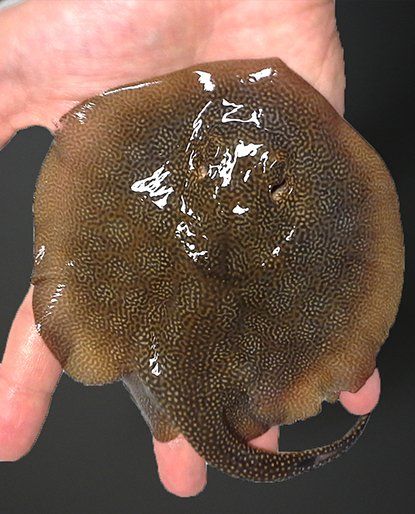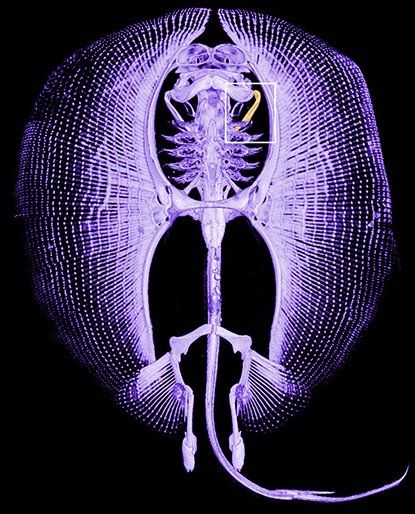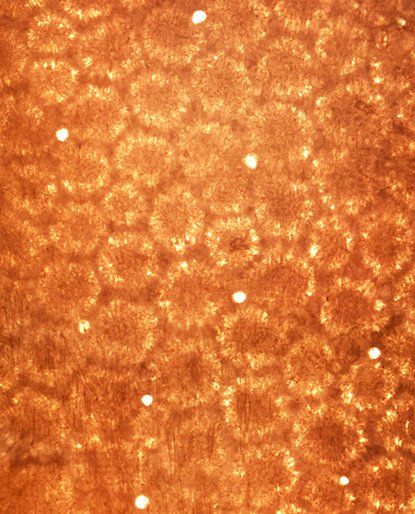The cartilaginous skeletons of sharks and rays
Although sharks, rays and their relatives are vertebrates they are lacking a bony endoskeleton. Sharks and rays are also called cartilaginous fish because the endoskeleton of these animals is comprised largely of unmineralized cartilage, and therefore differing fundamentally from the bony skeletons of all other vertebrates. Further, their skeletons are distinguished by a tessellated surface mineralization, a layer of minute, polygonal, mineralized tiles, which are called tesserae.
This ‘tessellation’ has defined the elasmobranch group for more than 400 million years, yet the limited data on development and ultrastructure of elasmobranch skeletons (e.g. how tesserae change in shape and mineral density with age) have restricted our abilities to develop hypotheses for tessellated cartilage growth and its mechanical performance. As unmineralized cartilage is considerably less stiff than bone, it is remarkable that sharks and rays represent such an evolutionary successful taxon, constituting some of the largest and fastest marine apex predators for more than 400 million years. Check out our work and learn more about tesserae..








